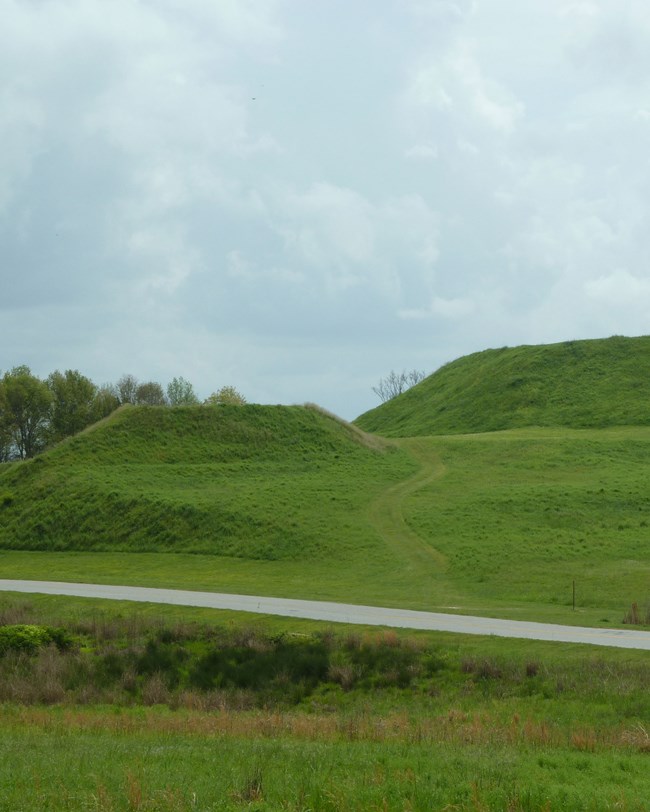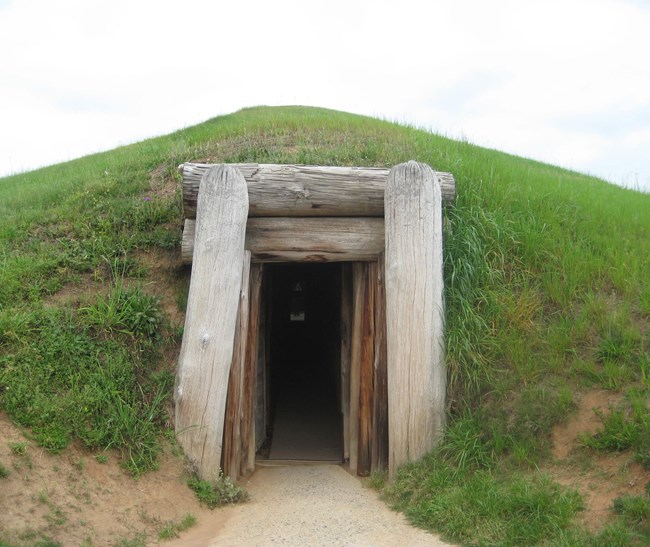Last updated: July 11, 2024
Article
NPS Geodiversity Atlas—Ocmulgee Mounds National Historical Park, Georgia
Geodiversity refers to the full variety of natural geologic (rocks, minerals, sediments, fossils, landforms, and physical processes) and soil resources and processes that occur in the park. A product of the Geologic Resources Inventory, the NPS Geodiversity Atlas delivers information in support of education, Geoconservation, and integrated management of living (biotic) and non-living (abiotic) components of the ecosystem.

Introduction
Ocmulgee Mounds National Historical Park (OCMU) is located in the city of Macon at the confluence of Walnut Creek and the Ocmulgee River in Bibb County, Georgia. Established on December 23, 1936, OCMU preserves evidence of one of the longest continuous periods of human habitation for any site in the NPS (National Park Service 2016a). Following a 2019 expansion and renaming from Ocmulgee National Monument, OCMU encompasses 1,350 hectares (3,336 acres). More than 12,000 years of history are recorded, representing multiple cultures and peoples including Paleo-Indian, Archaic, Woodland, Lamar, and historic Creek people. Evidence of ancient cultures is recorded in prehistoric earthen mounds (including the only known spiral mound in the United States); a restored ceremonial earthen lodge; prehistoric trenches; an early colonial trading post; and Civil War earthworks. The park possesses one of the largest collections of recovered artifacts (approximately 2.5 million items) in the NPS—these artifacts document almost every major period of Native American history in the American Southeast. OCMU is the site of one of the largest archeological investigations in North American history, and the area known as the Ocmulgee Old Fields was fundamental in the development of modern archeology (National Park Service 2014d).

Geologic Setting
Ocmulgee Mounds National Historical Park is situated in the Atlantic Coastal Plain physiographic province, a region that features a seaward-thickening wedge of Cretaceous and younger sedimentary rocks that generally decrease in age toward the Atlantic coast. The gently sloping topography of the province contains distinct marine terraces that record relict shorelines in some of the youngest units (Colquhoun and Johnson 1968; Colquhoun 1969; Richards et al. 1971). The geology of OCMU consists of three main sedimentary rock units (from oldest to youngest): (1) the Cretaceous Ripley Formation; (2) Eocene Ocala Limestone and Barnwell Formation; and (3) Pliocene(?)–Holocene alluvium associated with the Ocmulgee River valley. The Ripley Formation underlies the eastern portion of OCMU and predominantly consists of dark-gray clay and interlaminated fine-grained sand. Mapped in easternmost OCMU in proximity to the Macon airport are the Ocala Limestone and Barnwell Formation, which are composed of bright red sand, green to dark-gray clay, calcareous clay, and limestone.
Regional Geology
Ocmulgee National Monument is a part of the Coastal Plain Physiographic Province near its boundary along the Fall Line with the Piedmont Physiographic Province. The park shares its geologic history and some characteristic geologic formations with a region that extends well beyond park boundaries.
- Scoping summaries are records of scoping meetings where NPS staff and local geologists determined the park’s geologic mapping plan and what content should be included in the report.
- Digital geologic maps include files for viewing in GIS software, a guide to using the data, and a document with ancillary map information. Newer products also include data viewable in Google Earth and online map services.
- Reports use the maps to discuss the park’s setting and significance, notable geologic features and processes, geologic resource management issues, and geologic history.
- Posters are a static view of the GIS data in PDF format. Newer posters include aerial imagery or shaded relief and other park information. They are also included with the reports.
- Projects list basic information about the program and all products available for a park.
Source: NPS DataStore Saved Search 3037. To search for additional information, visit the NPS DataStore.
A NPS Soil Resources Inventory project has been completed for Ocmulgee National Monument and can be found on the NPS Data Store.
Source: NPS DataStore Saved Search 3084. To search for additional information, visit the NPS DataStore.

Related Links
Related Articles
Ocmulgee National Monument
National Park Service Geodiversity Atlas
The servicewide Geodiversity Atlas provides information on geoheritage and geodiversity resources and values within the National Park System. This information supports science-based geoconservation and interpretation in the NPS, as well as STEM education in schools, museums, and field camps. The NPS Geologic Resources Division and many parks work with National and International geoconservation communities to ensure that NPS abiotic resources are managed using the highest standards and best practices available.
